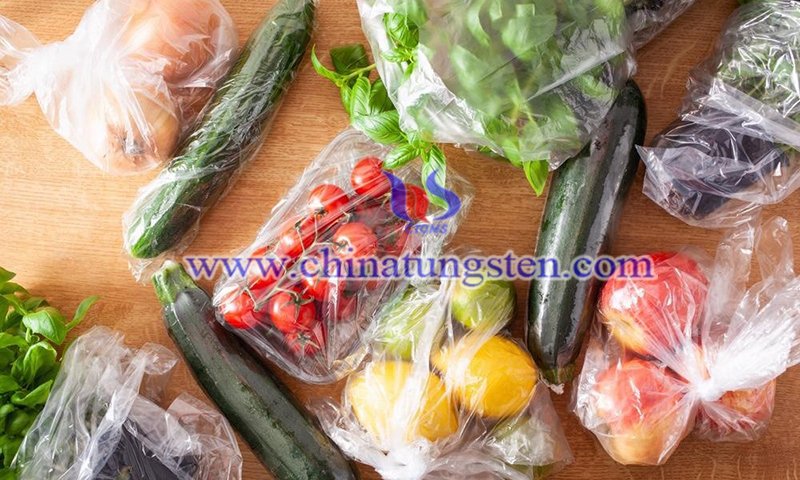Sustainable Food Packaging with Tungsten Oxide Thin Films
- Details
- Category: Tungsten's News
- Published on Sunday, 02 January 2022 21:34
With the advent and development of nanotechnology, tungsten oxide thin films offer a promising avenue for creating commercially useful biodegradable food packaging. A new study published in the journal Coatings explores how depositing tungsten oxide films on commercial PLA can advance this bioplastic to improve its overall performance and provide a more environmentally friendly solution for plastics manufacturing.
Traditional petroleum-derived polymers are currently used in large quantities, particularly within food packaging, but the use of such materials on a global scale for mass production can pose environmental problems. Plastics are the "go-to" material for most products in circulation and use by customers worldwide today, and these materials offer many benefits, such as lightweight, durability, and oxygen sealing properties that enhance their desirability in a variety of applications, from keeping food fresh to protecting product seals.
However, these traditionally manufactured petroleum-derived plastics have many drawbacks and cause significant damage to the environment. Due to their chemical stability, plastics do not react chemically with other substances, allowing plastic containers to hold a wide range of compounds. But plastic lacks the ability to decay, and it stays around for a very long time. Half of the plastic produced is used for single-use, resulting in a lot of plastic being wasted and ending up in landfills.
Only about 5% of plastic is effectively recycled, about 40% is in landfills, and an estimated 8 million tons is predicted to be in natural habitats, such as the ocean. This subsequently leads to plastics being broken down into debris-sized particles, called microplastics, which represent a small risk to human health.

Microplastics can affect human health in a variety of ways, be ingested by marine organisms, cause death and interfere with natural selection. Because microplastics absorb high concentration levels of toxic chemicals, they can cause serious damage to human health if consumed by humans, either through water ingestion or through animal consumption.
The new study, published in the journal Coatings, examines how depositing tungsten oxide thin films on commercial PLA could advance this bioplastic and provide a more environmentally friendly solution for plastics manufacturing.
The researchers investigated various thicknesses of tungsten oxide coatings, such as 25, 50, and 100 nm, deposited by radio frequency plasma magnetron sputtering techniques. The team used various morphological characterizations to address how tungsten oxide affects the performance of PLA, assessing surface chemistry changes through different types of spectroscopic methods.
This new study found that the addition of a tungsten oxide coating to PLA results in excellent results, indicating a significant improvement in UV protection and oxygen barrier properties. Oxygen penetration was also reduced by 99.9% and this innovative combination of tungsten oxide and polylactic acid was found to have antibacterial properties against bacteria such as E. coli.
The potential of this innovation using tungsten oxide could be considered revolutionary for the development of sustainable plastics. The use of plastic as a packaging material for most packaging has become a tradition due to its many benefits, and while paper packaging can be useful as an alternative for some products, it cannot compare to plastic.
The study illustrates the potential of tungsten oxide thin films and its use as a thin coating of polylactic acid for the creation of a hybrid bio-derived plastic. This material is beneficial and can be used in the same way as its conventional counterpart without the environmental consequences of toxicity. In addition, its potential antimicrobial properties could contribute to its use in sustainable food packaging, as it could ensure the prevention and reduction of bacteria, such as E. coli, in food products. This revolutionary development will be an innovative and eco-friendly alternative to food packaging.
- Tungsten Manufacturer & Supplier, Chinatungsten Online: www.chinatungsten.com
- Tungsten News & Prices of China Tungsten Industry Association: www.ctia.com.cn
- Molybdenum News & Price: news.molybdenum.com.cn
- Tel.: 86 592 5129696; Fax: 86 592 5129797; Email: sales@chinatungsten.com



 sales@chinatungsten.com
sales@chinatungsten.com